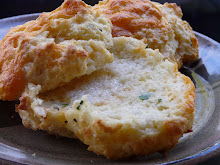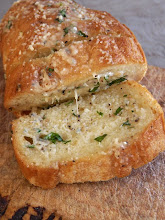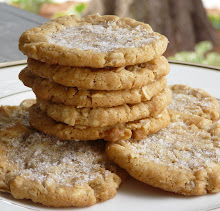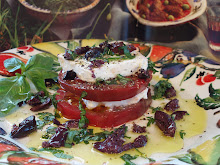



Barbara Kafka's high heat method of roasting is my favourite method whether roasting chicken or roasting turkey, beef, pork or lamb. I've been using her method now for many years.
If I have time I also like to pair this method with Judy Rogers' method of presalting.
To simplify this recipe - season a chicken, put it into a shallow roasting pan and put the pan into a preheated 500°F oven and roast for 50 to 60 minutes. .TIP: Use a roasting pan just big enough to hold the turkey/chicken. This will prevent smoke.
Simplest Roast Chicken
======================
Copied directly from Barbara Kafka's "Roasting, A simple Art" Cookbook.
NOTE: I use Judy Roger's (Zuni Cafe) Presalting Method to season and Barbara Kafka's Roasting Method.
5- to 6-pound chicken, wing tips removed
Freshly ground black pepper, to taste
I lemon, halved
4 whole garlic cloves
4 tablespoons unsalted butter,
1 cup Basic Chicken Stock or canned,
water. Fruit juice. or wine for
optional deglazing.
Kosher salt, to taste
Preheat oven to 500°F
TOTAL
Roasting time
50 ~ 60
minutes
Here it is, the recipe that started the book. If there is no lemon, garlic, or butter on hand, roast the chicken without them. Or play. Use peeled shallots or a small onion, quartered. Add some leaves from the top of a bunch of celery, a couple of sage leaves, or a Bay leaf. Try a few juice orange or blood orange wedges.
Vary the deglazing liquid to change the flavor of the gravy or to match what's in the bird. Basic Chicken Stock-or canned-is the starting point, but use part wine-whatever is left over, red or white-or a little vermouth. Make one third of the liquid orange juice if oranges are in the bird. This is not astrophysics. Have fun.
Place rack on second level from bottom of oven. heat oven to 500°E
Remove the fat from the tail and crop end of the chicken. Freeze the neck and giblets for Basic Chicken Stock. Reserve chicken livers for another use.
Stuff the cavity of the chicken with the lemon, garlic, and butter. if using. Season the cavity and skin with salt and pepper.
Place the chicken in a 12 x 8 x I 1/2-inch roasting pan breast side up. Put in the oven legs first and roast 50 to 60 minutes, or until the juices run clear. After the first 10 minutes, move the chicken with a wooden spatula to keep it from sticking.
Remove the chicken to a platter by placing a large wooden spoon into the tail end and balancing the chicken with a kitchen spoon pressed against the crop end. As you lift the chicken, tilt it over the roasting pan so that all the juices run out and into the pan.
Pour off or spoon out excess fat from the roasting pan and put the roasting pan on top of the stove. Add the stock or other liquid and bring the contents of the pan to a boil, while scraping the bottom vigorously with a wooden spoon. Let reduce by half. Serve the sauce over the chicken or, for crisp skin, in a sauce boat.









8 comments:
i made this a couple nights ago and while it was perfect looking, I set off the smoke alarms in our house TWICE and the house smelled of smoke and grease. I had to keep the doors open, turn on fans and spray Febreze throughout the house, for the durtion of the cooking time.
And I have to say, the skin wasn't that crisp to warrant the method of cooking. The chicken was moist and flavorful but my husband has made me romise to never try it again- ha! ha!
Have any ideas as to what went wrong?
stillhopeful dot monica at yahoo dot com
I have a friend who is an executive chef and he swears by the high heat method. I've never tried this (opting for the way my sainted grandmother roasted her chicken) but this is so convenient for workdays. The cost of whole chicken is so much less per pound that this is a must try. Thank you so very much for sharing this.
Do you cover the chicken at all with aluminum when you roast the chicken? -Tien
I have definitely partaken of the slow roasted kool-aid, if you catch my drift. I have experimented with recipes where the cooking time was over 5 hours and while the meat was certainly falling of the bone tender there was a certain component missing. Perhaps this is what some would call succulence. I tried this recipe and loved it. I brined my chicken before hand and found that after 20 minutes cooking under convection I too was producing excessive smoke. I simply turned the convection setting off and roasted conventionally for the remaining time. The skin was perfect and the meat was also juicy and tender. The flavour was also more "complete". I am no longer so sure the extra effort of a slow roasted bird is worth the effort.
Monica, I'm sorry you had a problem with this method. I have been using and recommending Barbara Kafka's method now for almost 14 years. I know many on other forums that are now High Heat converts.
It is important to use a roasting pan that is just big enough for the turkey/chicken. A pan with a larger surface allows the fat to spread out and will cause excess smoke. Also, never use the convection setting when high heat roasting. I have one friend that tried to roast her Christmas turkey at 500°F on convection. Needless to say she burnt her turkey. But she is a convert and now roasts her turkeys and chickens using this method.
Roast chicken is a favourite and thanks to this method we can have a roast chicken dinner even on the days I work, when I don't get home until after 5:30 PM.
I bet it smells amazing! I cannot wait to try it!
What brand roasting pan do you recommend? I've heard of some roasting pans warping or buckling at high heat. Also, Barbara Kafka recommends a pan 12x8x1.5, I can't find one that size - any recommendations
Jean, for a chicken I use a cast iron skillet. Perfect size for most chickens. You want to use a pan that is just big enough without a lot of excess surface space. Too large a pan will cause a lot of smoke.
Post a Comment